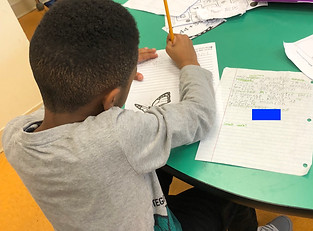Johanna Busch
Advocacy
Students have knowledge of injustice in the world, have informed opinions about it, and know that their voice and actions have value. They can advocate for themselves and others.
Introduction
Our class vision is to become "persistent problem solvers." As a teacher, it is my responsibility to equip students with the skills they need to solve problems that extend beyond the walls of our classroom. To do this, students need to start learning about and challenging injustice now. To accomplish this, students participated in a Black History Month project. Students learned about influential African Americans, created cereal boxes about them, and presented their projects to the class. This increased pride in students' cultural identities. Additionally, students actually acted as advocates by writing letters to the Baltimore school board to convince them to vote to keep our school from closing at the end of the year. Even though the campaign was not successful, students learned that they can stand up and raise their voices to advocate for change in the face of injustices. Finally, students learned about the issue of bullying. They participated in a conversation about this issue.
Conclusion
Both of these projects increased students' self-confidence in their problem solving abilities. To be advocates, students need to know that their opinions are important. Increasing their pride in their cultural heritage and learning about influential African Americans shows them that they, to quote a student, "can do anything." Taking part in an actual advocacy project further shows students that they can share their opinions with people in power and fight for change. I hope that building a foundation for advocacy at a young age will allow my students to become lifelong advocates for social justice.


